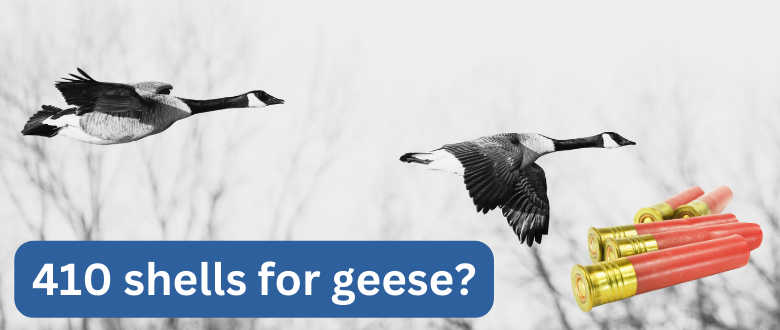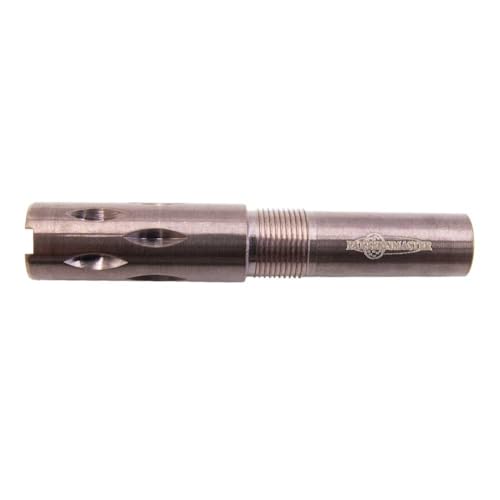Are there 410 shells for goose hunting? You may have asked yourself this question if you own a 410 shotgun, but the answer unfortunately is that 410 goose loads are few and far between.
While the .410 shotgun shell is a versatile choice for many hunting scenarios, it’s not the best option for goose hunting. It lacks the pellet density to routinely harvest geese, as well as the knock down power for long range shots.
Additionally, the 410 bore is also higher priced per shell than larger 12 gauge and 10 gauge ammo. But even with these limitations, reloading can level the playing field, especially with tungsten based ammo.

There aren’t any 410 shotgun shells for goose hunting, so reloading your own shells with steel, Hevi-shot, or TSS is the only option. These are the 5 main reasons that limit the effectiveness of 410 shotshells for goose hunting.
1. Not Enough Pellets
Goose hunting requires a shotgun shell that can deliver a substantial number of pellets to ensure a clean and humane kill. The .410 shotgun shell falls short in this department. Due to its smaller size, it carries significantly fewer pellets compared to the 12-gauge or 20-gauge counterparts. With fewer pellets, you run the risk of decreased accuracy and a higher likelihood of wounding rather than killing the goose instantly.
2. Limited Demand
Unlike the demand for smaller game hunting loads, such as upland birds or rabbits, the .410 shotgun shell isn’t the go-to choice for goose hunters. The majority of waterfowl hunters prefer larger gauges, like the 12-gauge, because they deliver the necessary power and spread to effectively target geese. Limited demand means less variety in ammunition, making it harder to find .410 shells suited for this purpose.
3. Shorter Effective Range
Geese are known for their high-flying and often distant presence. To take down a goose, hunters need a shell with an extended effective range. The .410 shotgun shell, with its smaller payload, offers a limited range. Attempting long-range shots with a .410 may lead to unnecessary wounded birds and missed opportunities. Hunters should consider gauges designed for longer distances.
4. Higher Prices Compared to 12-Gauge
The .410 shotgun shells come at a premium compared to the more common 12-gauge shells. Given the .410’s limitations for goose hunting, opting for larger gauges like the 12-gauge becomes a more cost-effective choice. You can get more bang for your buck while ensuring a higher likelihood of success while goose hunting.
5. Less Versatility
One key aspect of hunting is adaptability. While the .410 shotgun shell is suitable for many hunting situations, it’s not the most versatile option for goose hunting. Using a .410 means you’ll need to switch to a different firearm or ammunition type when hunting other game or in various environments. A more versatile shotgun and ammunition selection is often preferred by hunters looking to get the most out of their gear.
Related Products
Bottom Line
While the .410 shotgun shell is an excellent choice for hunting small game like squirrels and doves, it’s not the top pick for goose hunting. With limitations in pellet count, range, and versatility, along with higher costs and limited demand, goose hunters are better off considering larger gauges for a more successful and satisfying waterfowl hunting experience.
There currently aren’t any 410 shotgun shells on the market that provide an option to effectively hunt geese. To get the most out of your 410 bore, reloading your own shells with Hevi-shot or TSS is the best option to create effective 410 goose loads.
Was this helpful?
Search Chokes by Gauge
Latest Posts
- Best Waterfowl Choke Tubes for 2024, Expert Picks
- Choke Tube Diameter and Constriction Table
- 5 Easy Ways to Remove a Stuck Choke Tube
Last update on 2025-12-08 / Affiliate links / Product Images from Amazon Product Advertising API






